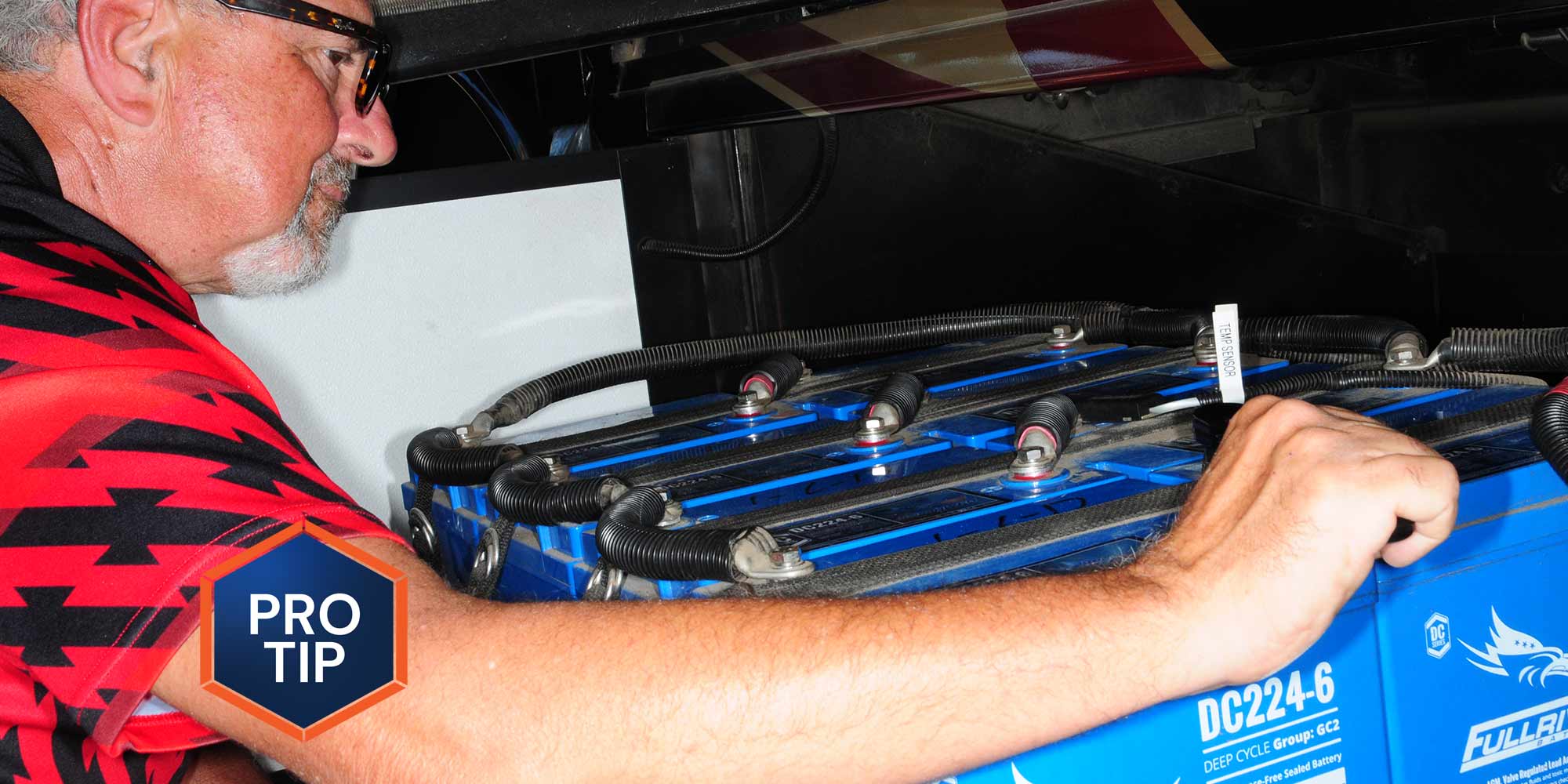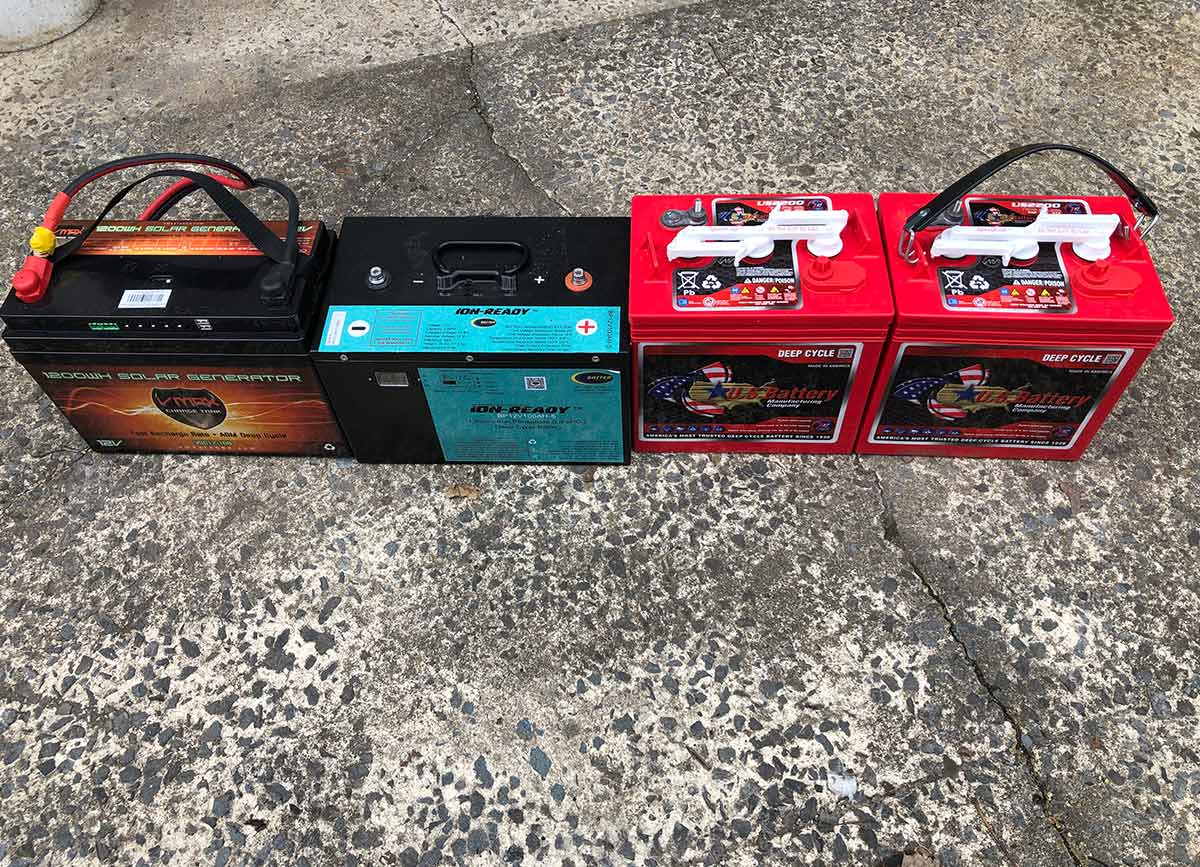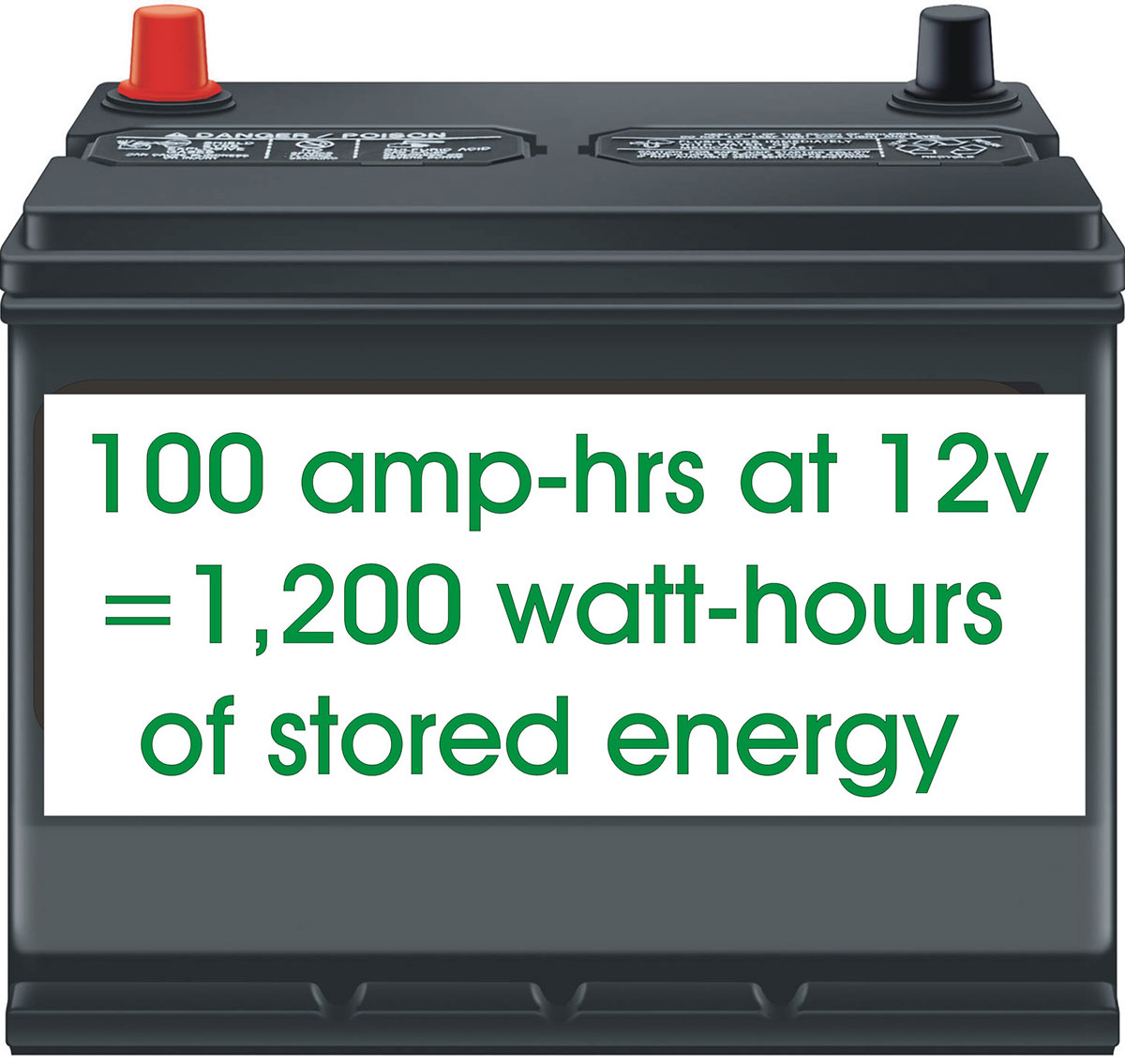Watt’s Happening?

If you’re plugged into shore power 100% of the time and only rarely move your RV, there’s nothing forcing you to have a substantial battery bank. That’s because while even though most of your RV’s electrical system (such as lighting, furnace fan and controls and monitoring systems) are likely powered by 12 volts DC, all modern RVs include something called a “converter.” This component’s job is to provide around 12 to 14 volts DC (direct current) at 40 to 60 amperes of current for general electrical needs.
Of course, this 12-volt DC power doesn’t power heavy appliances such as your convection microwave oven, rooftop air-conditioner or electric water heater, each of which require a dozen or more amps of current at 120 volts AC. But if you’re plugged into shore power (or a generator), the converter takes care of the 12-volt DC requirements of your RV while your power center distributes 30 or 50 amps (two 50-amp legs for 100 amps total) to all your 120-volt AC power-hungry appliances.

If you’re not boondocking, then whatever battery came with your RV is likely good enough to power the hydraulic jacks or move the slides in and out. However, if you’re part of the ever-growing community of RVers who want to camp unhooked from campground pedestals sans any generator noise, you need to know certain terms and how they impact your lifestyle. Chief among these are amps, amp-hours, watts and watt-hours.
Let’s explain.
A watt is a unit of power. Let’s say you have a 100-watt light bulb, for example. By definition, it draws 100 watts of power from its electrical source. It will also make 100 watts of light and heat energy (mostly heat if it’s an old-school tungsten bulb). Other common things with wattage ratings would be an electric space heater (1,200 watts), a coffee maker (800 watts) and a laptop computer (75 watts).
A watt-hour is a unit of energy. If your 100-watt light bulb is drawing 100 watts of power for 1 hour, it will use 100 watt-hours of energy. Turn it on for 10 hours and it will draw 10 times that: 1,000 watt-hours of energy (100 watts x 10 hours = 1,000 watt-hours), which could also be called 1 kwh (for kilowatt hours).

But what about batteries that are rated in amp-hours of storage?
We have to convert the typical 100 amp-hours of storage at 12 volts into watt-hours of storage. That’s pretty easy, because we know that Ohm’s law tells us that volts x amps = watts. So, a 12-volt battery rated for 100 amp-hours of storage can be defined at 1,200 watt-hours of storage. All you have to do is multiply 12 volts x 100 amp-hours to calculate stored energy (12 volts x 100 amp-hours =1,200 watt-hours).
Once you get everything converted to a common energy currency (watt-hours) it’s pretty easy to calculate how long you can run an appliance before you discharge the battery. As an example, let’s suppose you have a CPAP machine that draws 200 watts of power to operate. If you have 1,200 watt-hours of battery storage (100 amp-hours at 12 volts) you can see that 1,200 watt-hours/200 watts = 6 hours. It doesn’t matter if you’re using a 12-volt DC connection or a 120-volt AC wall-wart plug, because watts are watts. Once you get everything converted into watt-hours of energy, you can simply multiply and divide to estimate the available run time on a battery charge.
If you double the number of batteries, you will now have 200 amp-hours of storage at 12 volts, or 2,400 watt-hours of energy storage. With four 100 amp-hour batteries, you would have 400 amp-hours times 12 volts of storage, which equals 4,800 watt-hours of stored energy. Simply put, if you double your battery amp-hour capacity, then you double the time you can run your microwave or hair dryer or Instant Pot.
Keep in mind that this doesn’t take into consideration the initial power surge (starting watts) required by certain devices and appliances, from air-conditioners to refrigerator/freezers, but it’s a good starting point to help you determine power requirements in your RV.
Already a Subscriber? Click here for Access to the Full Issues.

